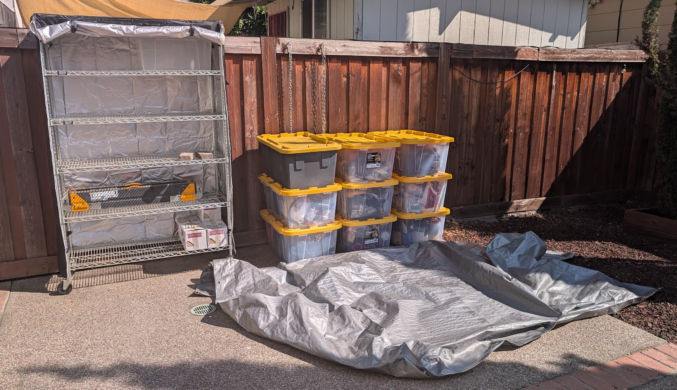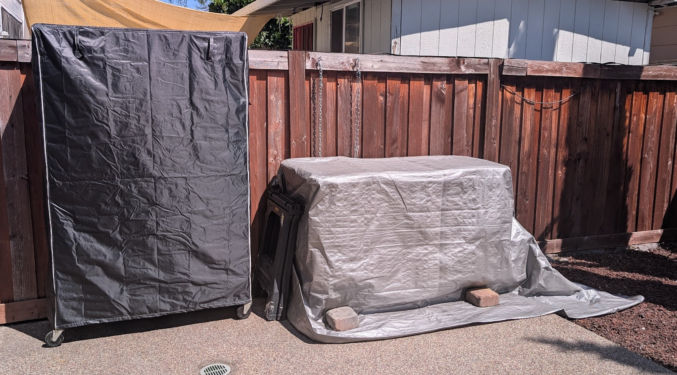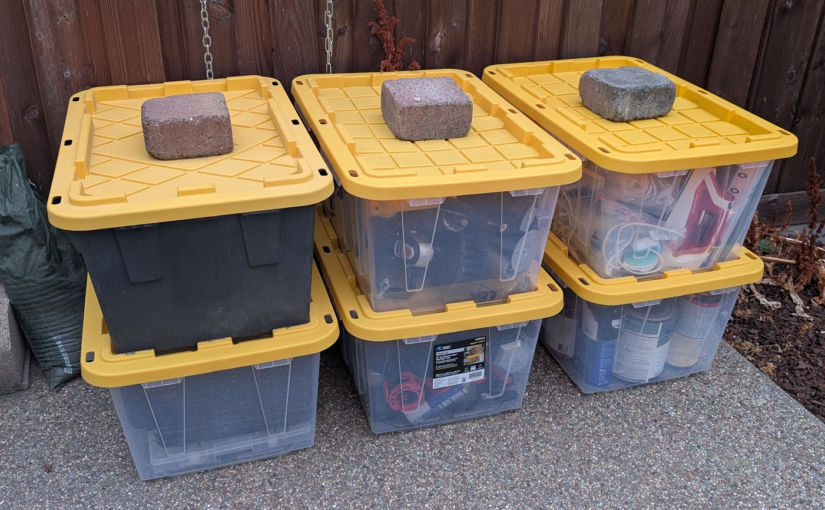In America, many people use their garages as storage rooms rather than what they were intended for (parking vehicles). I do the same, but I also use my garage as a home gym. Along the side walls are 5-tier shelf racks with wheels and on each shelf there are 3 transparent plastic containers.
- TRINITY EcoStorage 5-tier Wire Shelving Rack 48″ x 24″ x 72″ NSF, Includes Wheels
- SAMLA Box, clear, 22 ½x15 ¼x11 “/12 gallon

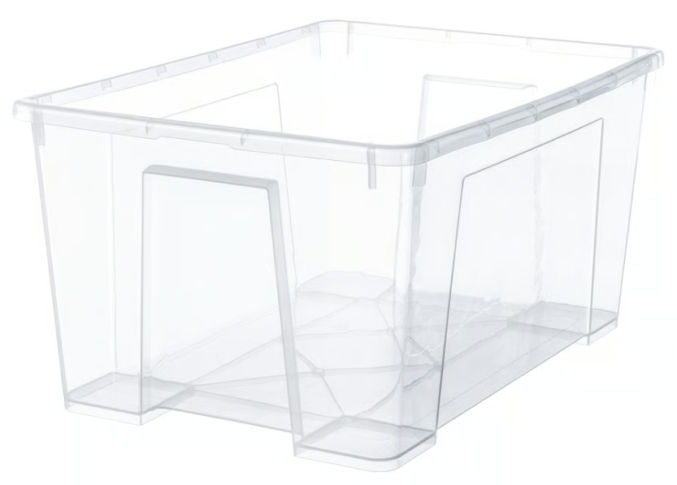
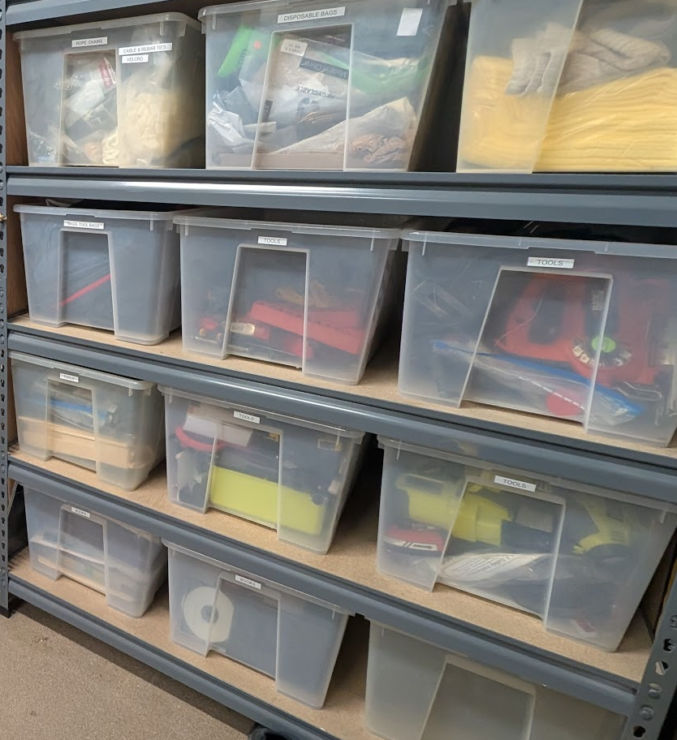
If you want a lid for the bin, you can buy it separately for $3.
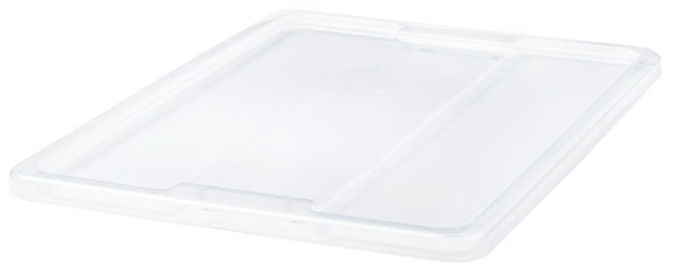
Having shelves with wheels makes it easy to move everything around.
But what do you do when you are renovating or remodeling your garage or if you need a temporary place to store your stuff for about 6-12 months. You can put everything in a self-storage unit, but for a 20’x20′ garage worth of stuff, you’re looking at paying hundreds of dollars a month if you are in the San Francisco Bay Area. You can buy a shed and put it in your backyard, but a large one would cost your around $1500, and you may not necessarily have the space for a large one in your backyard. Plus, you’d have to spend a lot of time assembling it, and it’s more of a permanent solution rather than a temporary one.
One low-cost option is to simply put your stuff in heavy-duty plastic storage containers with lids and stack them up in your backyard. Since they come with a lid, you wouldn’t need a shed because they are waterproof. If you’re worried strong winds could blow the lids off, just place something heavy on them, like a concrete paver.
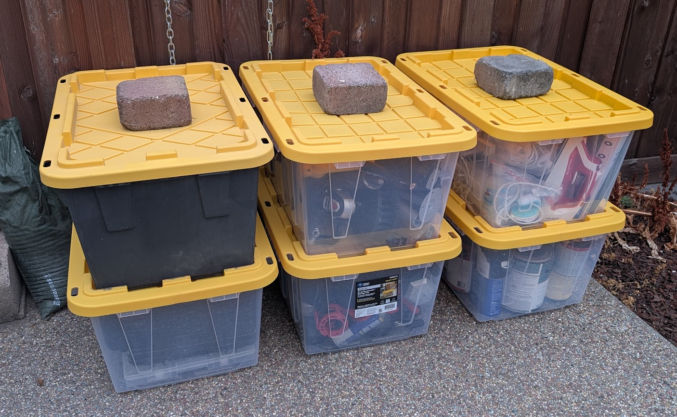
The 27-gallon plastic bins are a good size as they’re not too big to carry and they’re not too small to fit somewhat large items.
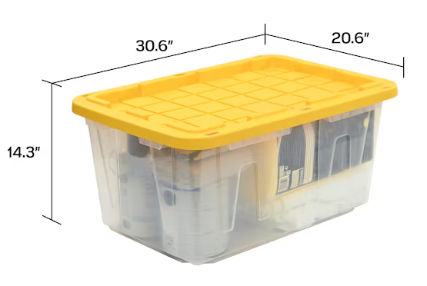
The transparent kind is nice because you can see what’s inside and don’t need to necessarily label each bin. If you do want to label the bins, you can buy a label maker. This Brother P-touch PT- D610BT can print up to 1″ labels, making it easy to read them from a distance.
As of this writing, the price for a 27-gallon bin is $14, so even if you needed 35 of them, you’re only paying $500 for them, and when you’re done using them, you can easily empty the contents and stack them inside each other for future use.
UPDATE: Costco Business Center has the same 27-gallon bins for $11. Both the bin and the lid are transparent, which is even better.
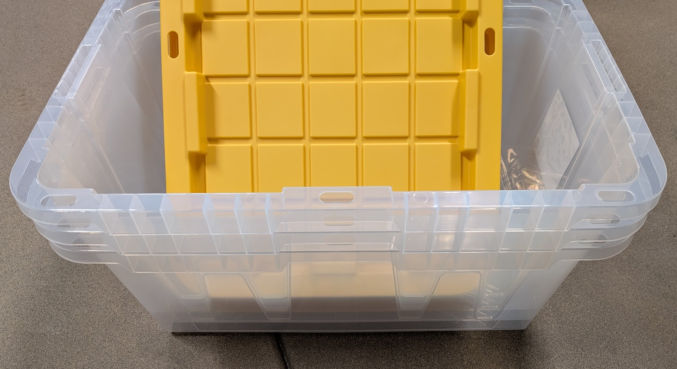
If you have a lot of stuffed bins, some of which may be heavy, you don’t want to have to carry each one. For convenience, you can just buy a folding platform truck.

For $36, it’s totally worth it. The plastic bins fit on the platform and the handle allows for comfortable pushing or pulling (I prefer pulling). When you’re done moving the bins, you can fold the handle down so the dolly doesn’t take up a lot of space.
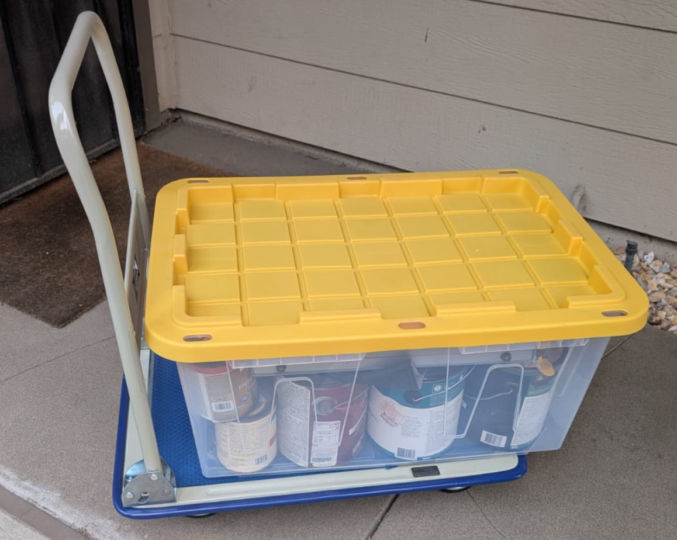
Now, you may have some large or long items that won’t fit in those 27-gallon bins. For these items, you can either but a few larger bins, like this 75-gallon one, which comes with its own wheels.
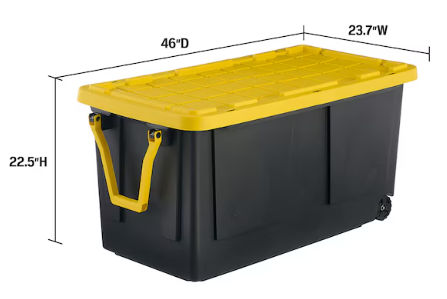
Or, you can just buy a small shed just for those items.
If you leave things exposed to the elements for a long time, they can become weathered and even break down. Thin plastic, for example, can become brittle from long exposure to the sun’s UV rays. To prevent this from happening, you can cover the bins with a heavy-duty tarp that is treated to prevent deterioration from UV rays.
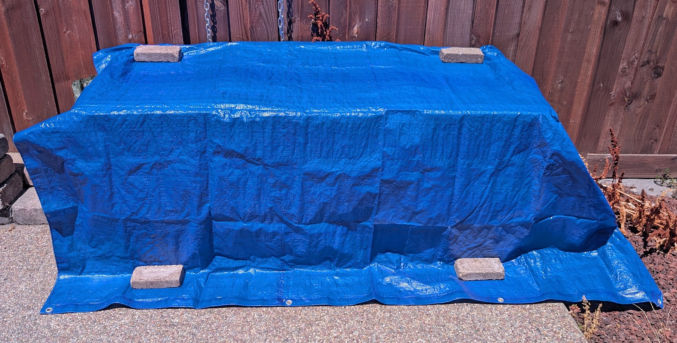
If the tarp doesn’t cover the sides and you’re worried water might get in through some small gaps between the bins and their covers, you can cover the gaps with duct tape.
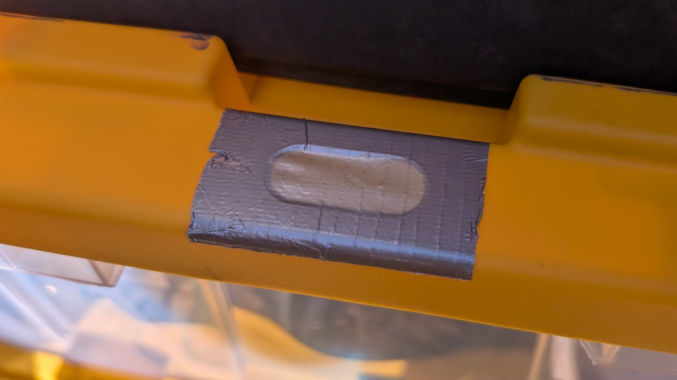
Or, you can buy a bigger tarp. The one picture below is 9mm thick (heavy duty) and from Harbor Freight.
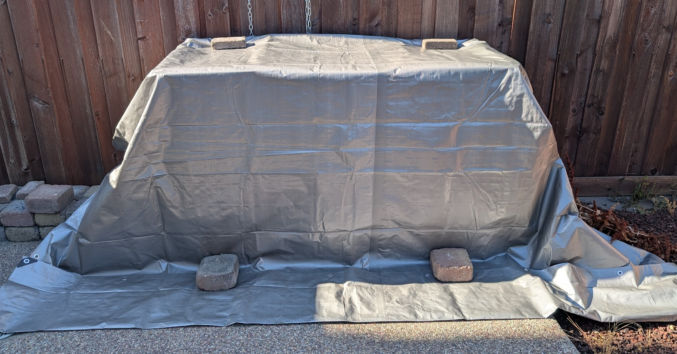
But what if you have a bunch of shelving racks with uncovered bins in them? In this case, rather than disassemble the racks and buy lids for those bins, you can buy a cover designed specifically for shelving racks. There are many on Amazon with many different sizes. I bought this 72″ H x 48″ W x 18″ D one on Amazon. It’s waterproof and the zippers make it easy to open one side when you need to get something.


If you have to store a bunch of clothes, a cheaper storage option is to put the clothes in a cardboard box or a plastic tote bag, like this.

For just $5, these large, 20-gallon plastic totes are cheap and, since they’re designed for light items, like clothes, you can easily carry them without the need for a platform truck or dolly. They also come with a zipper. If you go with cardboard boxes, not only are they not waterproof, but you’d have to use tape to close them, which is extra work.
So there you have it. A cheap, easy, and organized way to temporarily store stuff in your backyard.
